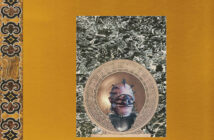
There was a time when the aesthetics of the futurepresent could be characterised sonically by devices such as the industrial noise, repetition, the robotic, the motorik. As our culture shifts from an emphasis on the machine to an emphasis on the binary computation, it comes as little surprise that the utopian/dystopian views of that shift should be reflected sonically.
Steme sounds like the innards of a computer – not the physical whirrings of hard drives, but the process of information moving at near lightspeed. There is much silence. There are brief hints at the source material here and there – perhaps a passing car in ‘Leak’, perhaps small objects being randomly dropped in ‘Organic’, but these are the slightest glimpses in an otherwise impenetrable flow of stuttering static and miniscule glitches. Where sonic visionaries of the 70s or 80s may have obsessed over army like masses of bludgeoning noise, ERIKM acknowledges a much more subtle anxiety in our age. Inspite of the broken nature of much of the sound, it feels more like the computer/information buzzing along each time you turn your back rather than any sort of disfunction. The best example of a sense of paranoia is found in the album’s key focus track, the 22 minute ‘White Out’. The experience is best felt with headphones. A subtle white noise starts the track. It feels like walking into a vast, empty shopping centre, the only sound present being the hum of a thousand fluorescent lightbulbs. There is nothing particularly aggressive about the sound, but it builds almost imperceptibly over 15 minutes to a crescendo which feels like it is slicing pieces out of your brain, before trailing off back to a haunted, sterile shimmer. It’s tough listening, but worth the experience.
Having listened intently to this album, I then proceeded to read the bio/sleeve notes. In discovering the process involved in creating the sound, much of the poetry is removed, disappointingly placing technique in the forefront. My perception of the source material became severely restricted and I found it difficult to once again think of the audio beyond what I had now been told. Best then to leave the explanations alone, I say, and play cerebral cat and mouse with the limited, but ultimately much more profound, palette of stutter and static on offer in the actual recordings.
Adrian Elmer



